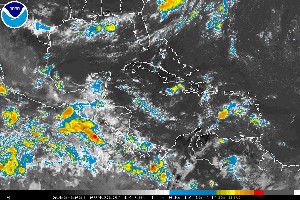Panama Declares State of Emergency

Yesterday (Aug. 12. 2015) The Panamanian government declared a state of emergency in response to the nation wide drought.
The declaration was in an effort to take responsible action and prepare for an extended drought that could last well into "rainy season", affecting the country dramatically.
The state of emergency will be in place until 60 days after the temperature of the equatorial tropical Pacific Ocean drops 0.5 degrees Celsius below what is considered the "normal" temperature, according to the World Meteorological Organization (WMO).
In a meeting with authorities yesterday the Environmental minister, Mirei Endara, stated that rainfall for the months of October and November would be 50% lower than previous years. For this reason measures must be taken to save water immediately. At this point authorities have banned the use of potable water for watering lawns, gardens, and golf courses. They will also not be issuing permits for burning of branches, brush and other natural waste for fear of fueling wildfires. Currently, we are unsure how these regulations will be imposed.
Endara emphasized emergency measures are not enough, and announced the creation of a high-level commission for water security, consisting of government officials and members of the national civil protection system. They will create, in a period of 4 months, a plan to help deal with these types of problems going forward (2015-2050). The commission will examine the growing demand for water in Panama. This demand has been created by the increase in tourist investment, operations of the Panama Canal, and the birth of new housing complexes throughout the country.
The drought will affect the functioning of the Canal, as it will limit the size of ships passing through the waterway. Panama Canal Authority state that the maximum ship draft (it's depth in the water) will be 39 feet starting Sept. 8. Canal authorities also stated that further restrictions could be imposed Sept. 16 is weather conditions do not change.
While government agencies are looking at this year's "El niño" weather pattern to explain the drought, drought is not new to Panama. The country has been experiencing severe droughts for several years now, and while it might take an El niño year to make people notice, there is a bigger picture that needs to be acknowledged.
*"El Nino" is an abnormal warming of surface waters in the tropical sections of the Pacific Ocean. It occurs every three to five years and can impact regional climate and precipitation.
HOW YOU CAN HELP:
- Stop watering your lawn & garden (it will grow back)
- Take shorter showers
- Turn off the tap when you brush your teeth
- Don't fill your pool
- Report broken water mains
Trending Tags
